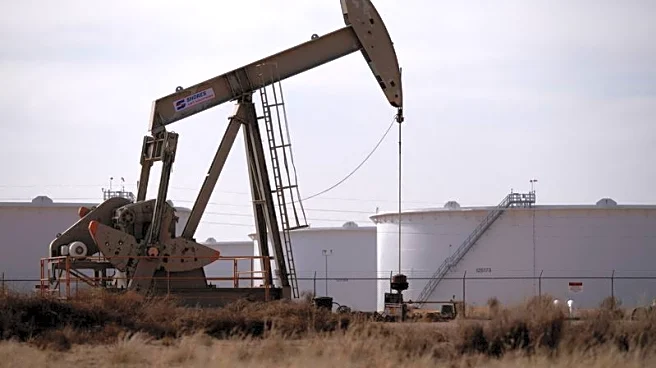Rapid Read • 8 min read
The national average price for regular-grade gasoline in the United States has risen by 1.9 cents per gallon, reaching $3.237, according to the latest Lundberg Survey. This increase comes amid stable wholesale prices and a high utilization rate in the refining sector, which has jumped to 96.9%. Despite the rise in pump prices, gasoline demand is projected to decrease by 0.7% for the full year of 2025. The market remains calm, with no significant disruptions from geopolitical events or trade tariffs. Retailers have experienced a slight loss in retail margin, currently at 32.9 cents, due to the wholesale price increases.
AD
The slight increase in gasoline prices reflects broader stability in the U.S. fuel market, which is crucial for consumers and the economy. Stable prices can help mitigate inflationary pressures, benefiting both consumers and businesses. However, the projected decrease in gasoline demand indicates potential challenges for the petroleum industry, which may need to adjust strategies to maintain profitability. The high utilization rate in refining suggests that the industry is operating efficiently, but any disruptions could impact supply and prices. The situation underscores the importance of monitoring geopolitical developments and trade policies that could affect the market.
If oil prices and gasoline supplies remain stable, a potential decrease in pump prices by 5-10 cents could occur as refiners and retailers seek to boost sales volumes. The industry will continue to watch for any geopolitical or economic changes that could impact the market. The upcoming U.S.-Russia summit for peace in Ukraine and potential weather events are factors that could influence future market conditions. Stakeholders in the petroleum industry may need to adapt to changing demand patterns and external pressures to maintain stability.
The current market conditions highlight the delicate balance between supply, demand, and external factors in the fuel industry. The projected decrease in gasoline demand may reflect broader shifts in consumer behavior, possibly influenced by economic conditions or environmental concerns. The industry's response to these changes could have long-term implications for energy policy and sustainability efforts. Additionally, the stable market conditions provide an opportunity for stakeholders to focus on innovation and efficiency improvements.
AD
More Stories You Might Enjoy












